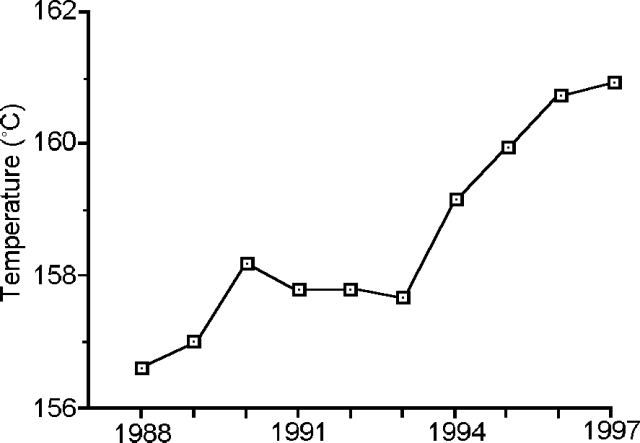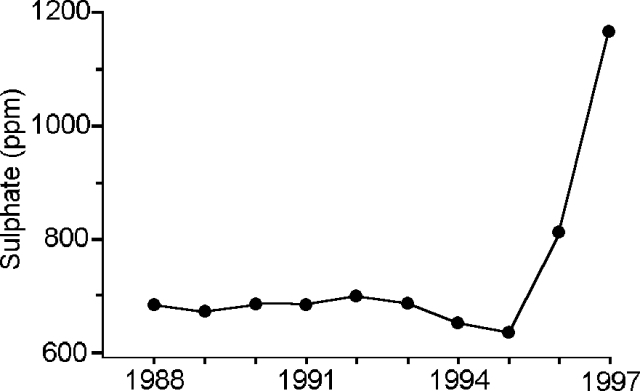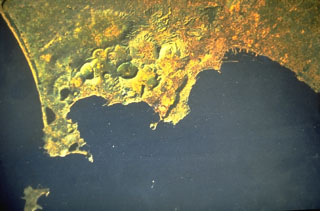Report on Campi Flegrei (Italy) — November 1997
Bulletin of the Global Volcanism Network, vol. 22, no. 11 (November 1997)
Managing Editor: Richard Wunderman.
Campi Flegrei (Italy) Increase in sulfate concentrations and fumarole temperatures
Please cite this report as:
Global Volcanism Program, 1997. Report on Campi Flegrei (Italy) (Wunderman, R., ed.). Bulletin of the Global Volcanism Network, 22:11. Smithsonian Institution. https://doi.org/10.5479/si.GVP.BGVN199711-211010
Campi Flegrei
Italy
40.827°N, 14.139°E; summit elev. 458 m
All times are local (unless otherwise noted)
Since the ground upheaval events of 1982-84, systematic geochemical surveillance has been performed at Campi Flegrei. Fumarolic gases, crater lakes, and thermal springs have been monitored; since 1984, no significant physical or chemical changes have occurred.
However, two characteristics showed a statistically significant change; the temperature in the Bocca Grande fumarole increased (figure 19) and the sulfate concentration in crater lakes and thermal springs increased sharply during 1995-97 (figure 20). These increases may have resulted from a perturbation in the area caused by increased permeability; thus the interaction of confined, hot, sulfate-rich aquifers may have increased.
 |
Figure 19. Temperature of Bocca Grande fumarole at Campi Flegrei during 1988-97. Courtesy of M. Martini. |
 |
Figure 20. Sulfate concentration in crater lakes and thermal springs at Campi Flegrei, 1988-97. Courtesy of M. Martini. |
Geological Summary. Campi Flegrei is a 13-km-wide caldera that encompasses part of Naples and extends to the south beneath the Gulf of Pozzuoli. Episodes of significant uplift and subsidence within the dominantly trachytic caldera have occurred since Roman times. The earliest known eruptive products are dated 47,000 years BP. The caldera formed following two large explosive eruptions, the massive Campanian ignimbrite about 36,000 BP, and the over 40 km3 Neapolitan Yellow Tuff (NYT) about 15,000 BP. Following eruption of the NYT a large number of eruptions originated from widely scattered subaerial and submarine vents. Most activity occurred during three intervals: 15,000-9,500, 8,600-8,200, and 4,800-3,800 BP. The latest eruption were in 1158 CE at Solfatara and activity in 1538 CE that formed the Monte Nuovo cinder cone.
Information Contacts: Marino Martini, Dipartimento di Scienze della Terra, Università di Firenze, Via La Pira 4, 50125, Firenze, Italy.

